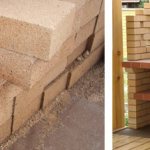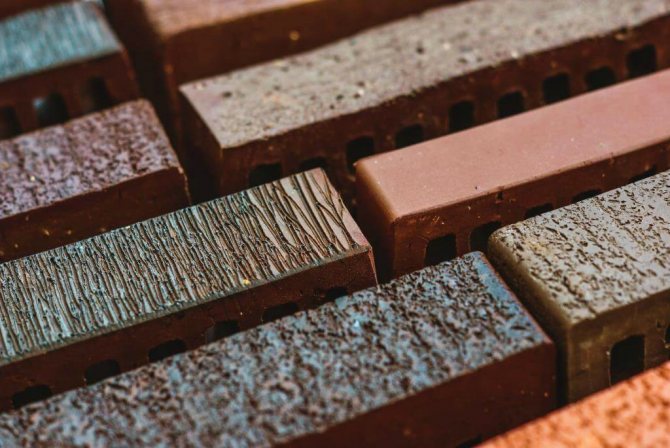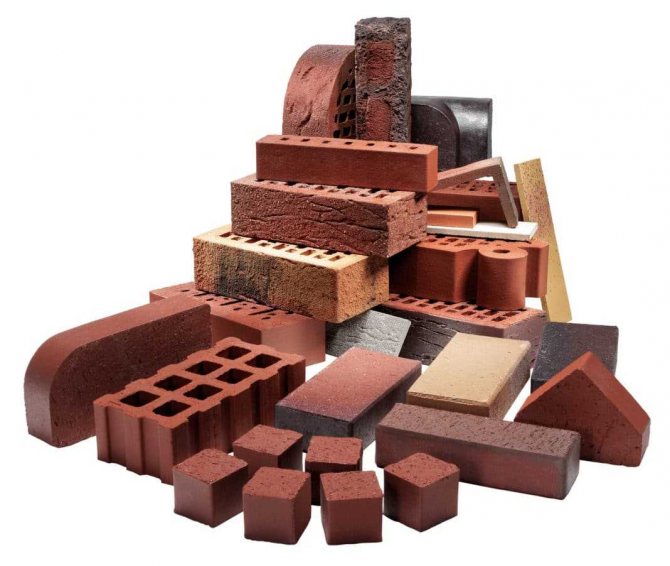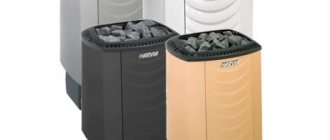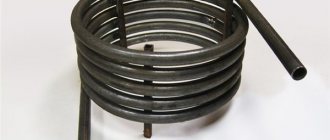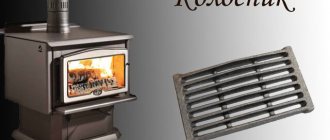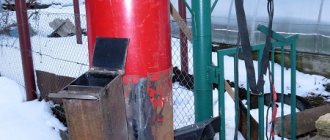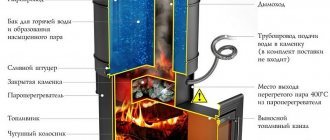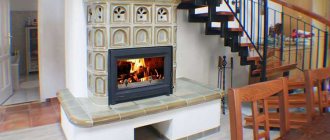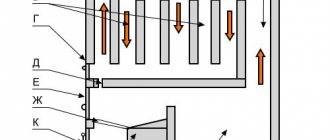In order for the furnace masonry to turn out to be of high quality, you need to choose a good refractory brick that can withstand the combustion temperature of the fuel without losing performance. The stones must also meet requirements such as fullness and integrity. If even one element is chipped or cracked, the efficiency of the entire furnace will decrease. The shape of each brick must be flawless, all corners and surfaces must be straight and even. The firing must be uniform and complete - raw brick for ovens will not serve anyone well. In the thickness, voids with air should not be tapped. If cavities are present, fire-resistant bricks will not conduct heat well and may crack. To check the sound, you should take a stove-maker's hammer with you to the store and easily tap it on the material. The sound should be clear, clear, the fireclay block emits a metallic sound.
Features of the
In order for the oven masonry to be of high quality, you need to choose blocks with the correct dimensions. Each piece should have a standard length and width, which are 23x12.3 or 11.3x6.5 cm, respectively. When assembling a brick stove, it is better to use yellow products for the ash pan and combustion chamber, and for the outer layers, the chimney, a red or white heat-resistant version is well suited. You should pay attention to the painting - the color should be uniform both outside and inside, at the break. In order for all units to exactly comply with the standards, it is recommended to buy the entire required volume at once, preferably from one batch.
It is also important to consider the labeling of the material that you plan to buy. For a standard heating stove, M100-M300 are best suited. This number indicates strength - the larger it is, the stronger the refractory brick is. So, M200 can withstand a load equal to 200 kg / cm2. Stones of grade below 100 are of too poor quality - they are covered with cracks, heterogeneous structure, irregular shape. Too strong masonry, although it looks flawless, is afraid of high temperatures, begins to delaminate during operation.
Basic requirements for refractory bricks
The sauna stove works in difficult conditions. On weekends, the steam baths were heated to 100 degrees Celsius, and then until the next weekend it stands in conditions of low, and sometimes even negative temperatures, and such cycles are repeated weekly. Hot parts of the stove, in particular its firebox, are heated to serious temperatures, in some cases up to 1100 degrees Celsius.
It should be remembered that an ordinary ceramic brick reacts poorly to contact with an open flame, and at temperatures exceeding 1150 degrees, unstable plastic deformation begins, or, as the stove-makers say, “the firebox is floating”. Therefore, it is quite obvious that ordinary ceramic bricks are not suitable for the construction of hot parts; exclusively refractory is required.
Thus, it is possible to clearly form a list of basic consumer requirements related to the quality of refractory bricks:
- Resistance to long-term exposure to open flame without signs of destruction.
- Resistance to high temperatures, with an indicator not lower than 1400 degrees Celsius.
- The ability to tolerate well cyclic temperature changes from 1100 degrees to negative.
- Good mechanical strength.
- Sufficient heat capacity and satisfactory thermal conductivity.
- Low dynamics of inertia, at which the stove warms up moderately and cools down slowly, evenly giving off the accumulated heat to the surrounding space.
Description and features
Modern companies produce bricks for ovens in the factory with full compliance with the requirements of GOST 390–96. Quality and its correct choice determines the strength and economy of the structure. The building material made in compliance with the technology heats up quickly and slowly releases thermal energy into the environment, thus performing the function of a battery.
The clay used for making is refractory. The following components are often added to the composition of the product: graphite, coke powder and crushed quartz rock. They give the finished product special physical and mechanical properties.
Furnace raw materials are divided into types:
- • Fireclay.
- • Quartz.
- • Carbonaceous.
- • Basic.
Building material of each type is used for specific purposes and before placing an order for any of them, you must clearly understand what it is for. On average, brick oven price per piece. ranges from 20 to 130 rubles, it all depends on the quality and suppliers.
Types of refractory bricks
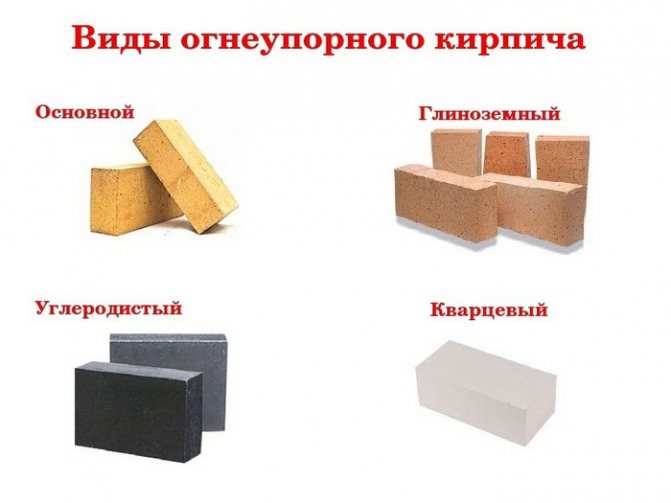
A special material with pronounced refractory qualities is used both in everyday life and in production, especially in metallurgy and foundry. What is the classification of such a brick, depending on the raw materials from which it is made:
- Quartzite is a brick for the production of which fine-grained enriched quartz sand and certain types of clay are used. The mixed and formed mixture is subsequently fired in tunnel kilns;
- The main refractory or dinas is more than 90% composed of silicas associated with lime. The molded products are fired at a temperature of 1460 degrees Celsius and used for the construction of industrial furnaces: open-hearth, glass-making, for coke burning. In everyday life, such products are used extremely limited;
- Carbonaceous or graphite refractory is characterized by a rich dark color due to the inclusion of carbonaceous components, in particular graphite, in the molding mixture. Due to the specificity of its use in everyday life, it also did not receive distribution;
- Fireclay bricks are made on the basis of refractory clay - kaolin, and to improve certain operational qualities, additives are introduced into the formulation: zirconium, corundum and others. Due to the optimal ratio of price and high consumer qualities, it is very widely used in everyday life, in furnace construction. Withstands temperatures up to 1600 degrees, is resistant to open flames, is well processed into chamotte grits, which are used as part of a refractory mortar for laying and repairing sauna stoves. It differs in light color, from sandy to cream in the interpretations of shades, depending on the raw materials and the characteristics of the firing.
Which brick is not used in the furnace business
Not recommended for use:
Silicate. Inexpensive, colored, frost-resistant, environmentally friendly with clear edges. But it's definitely not suitable for a furnace structure. Firstly, sand-lime brick does not adhere well to clay mortar. Secondly, it does not withstand temperature differences. Thirdly, the heat capacity of the brick is too low for a heater, which contributes to the rapid cooling of the room.
Hyper-pressed. Durable, frost-resistant, colored, optionally with a textured pattern on the edges. But a brick made by the method of semi-dry pressing is not very plastic. When shrinking, such material will simply crack. Just like silicate, hyper-pressed at a temperature drop, it absorbs moisture.
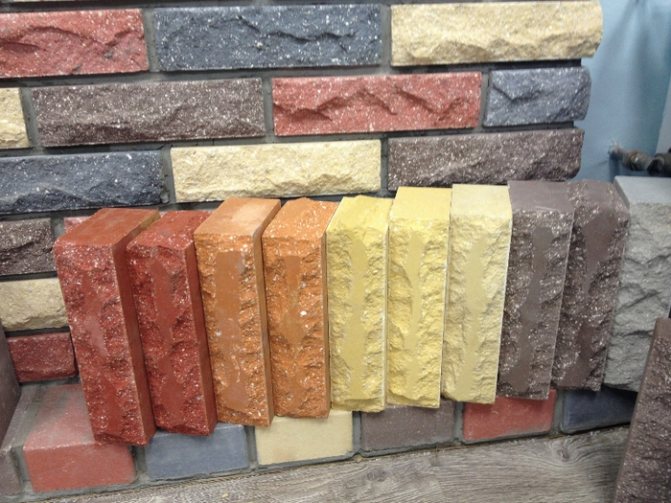

Raw ceramic brick. In case of temperature changes, it quickly absorbs moisture and crumbles. Strongly not recommended for construction purposes.
Brick rejection
You should not apply the following marriage of a brick product:
- deviation from the perpendicularity of the edges is more than 3 mm; deviation from dimensions in length more than 5 mm, width - 4 mm, height - 3 mm;
- burnout, dark spots;
- burrs, scuffs, cracks, chips, foreign inclusions;
- round sinks-caverns (up to 4 pieces are allowed in fireclay);
- when tapped, a dull sound is emitted;
- after the "crash test" of the fireclay block, small fragments remained (if the seller permits);
- when chamotte surface is rubbed, dust and crumbs remain.
Characteristics of fireclay bricks
Important! The main characteristics of fireclay refractory bricks are reflected in the State Standards for products of this type, however, in some cases, the manufacturer may regulate the characteristics of the product with the Technical Specifications of the departmental or in-plant level.
Density


The density of this material ranges from 1700 to 1900 kg / m3. It should be understood that the higher the specific gravity of the material, the greater its heat capacity, and at the same time, as a rule, it is mechanically more durable. The latter circumstance also has a negative quality, in the sense that high-strength material is difficult to process to give it certain geometric shapes and sizes when fitting in the oven masonry.
Fire resistance
Standard fire resistance ranges from 1100 to 1800 degrees Celsius. Moreover, for the operating conditions of the sauna stove, an indicator of 1400 degrees is quite enough.
Strength
The grade of mechanical strength is within the range of M 75 - M 250. As mentioned above, the machinability of the material directly depends on the indicator of the mechanical strength, in order to give it a certain size or shape.
It will be useful to give an information table that reflects the weight of fireclay bricks, factory-packed on a standard wooden pallet:
| product name | Linear dimensions of one product, in mm | Number of bricks in a pallet, pcs | Gross weight of one pallet, t |
| Straight brick, grade ШБ - 5 | 230×114×65 | 385 | 1,309 |
| Straight brick, grade ШБ - 8 | 250×124×65 | 297 | 1,188 |
| Ledger brick, grade ШБ - 6 | 230×114×40 | 630 | 1,350 |
| Wedge end brick, grade ШБ - 22 | 230×114×65×55 | 420 | 1,302 |
| Wedge end brick, grade ШБ - 23 | 230×114×65×45 | 420 | 1,218 |
| Wedge ribbed brick, brand ШБ - 44 | 230×114×65×55 | 420 | 1,302 |
| Wedge ribbed brick, | 230×114×65×45 | 420 | 1,176 |
| grades ШБ - 45 Fireclay slabs, grades ШБ - 94 | 460×230×75 | 84 | 1,367 |
Furnace refractory plates are also widely used in the formation of their hot parts and allow the formation of planes with one element.
Frost resistance brand
This indicator characterizes the ability of a material to withstand a certain number of cycles of exposure to negative temperatures without signs of permanent deformation or destruction. In the conditions of periodic use of a country bath, this is an important objective indicator that determines the durability of the device.
Coefficient of thermal conductivity
The specified parameter defines. How quickly and efficiently the oven will heat up and how much heat energy the material will radiate into the surrounding space. Characteristically, fireclay bricks of various brands have approximately the same coefficient of thermal conductivity, which fluctuates within 0.6 W / m C.
General technical indicators
When selecting products for the construction of an object exposed to extreme temperatures, it is important not only to pay attention to fire resistance. No less important is how frost-resistant the product is, its shape, resistance to stress and aesthetic appearance.
Distinctive feature of raw materials suitable for styling:
- • It has a low coefficient of thermal conductivity, this helps to quickly accumulate heat and does not allow nearby objects to suffer from high temperatures.
- • Its property does not change even with a sharp change in degrees.
- • Highest frost resistance, allows its use in the northern regions.
- • Geometry and shape comply with all applicable regulations.
- • Withstands maximum mechanical stress.
Moisture absorption is 15-30%, which is an average indicator and does not allow storing the product in a humid room without losing its distinctive properties.
Which is best for the oven
Everything here rests not so much on the optimal possibilities as on the cost of the future construction. If there are no financial problems, it is better to complete the entire structure exclusively using fireclay bricks. This ensures that the material is absolutely insensitive to high temperatures and open flames.
For a more economical option, you can cheat a little: the firebox compartment is made of more expensive fireclay bricks, and the rest of it is made of refractory and ceramic (in places of minimal heating). This will significantly reduce the cost of building the furnace, while not overly affecting the strength characteristics. The only inconvenience, besides the need to carefully plan everything, is the difference in size, which will have to be compensated for with a solution or simply removed manually.
But what the size of a one-and-a-half brick looks like and where it should be used is indicated here.
The video tells you how to choose a brick for ovens:
And here is how a one-and-a-half facing red brick looks like, you can see here.
Using red bricks to create ovens
Creating a furnace requires going through the following steps:
- Determining the type of oven.
- Development of the structure scheme.
- Selection of material for construction, calculation of its quantity, purchase.
- Calculation of costs.
- Choosing the location of the stove.
- Furnace construction.
The type of oven depends on the structure in which it will be located. It can be a stove in the country, in a bathhouse, at home or on the street. The masonry technique and appearance of such stoves will certainly differ.
- If you need to build a stove in the house, then it is advisable to do this at the stage of its construction. Otherwise, you will definitely need some restructuring of the house to create a foundation and a chimney for the stove.
- If you need to bring a stove to life in a bath, then you can build a simpler design of a stove-heater.
Necessary equipment and raw materials
To build a furnace, you will need tools, physical strength (people) and materials.
List of construction tools:
- Soviet shovel
- Bulgarian
- Perforator
- Pickaxe hammer
- Trowel for laying mortar
- Joint for compacting mortar
- Metal sieve with a mesh diameter of not more than 2 mm
- Roulette five-meter
- Plumb line to check the verticality of corners
- Stove ruler
- Opening template
- Flexible level
- Building level
- Mops
- A large number of rags
- Buckets.
Required material for laying the stove:
- Brick (better to use ceramic)
- Water
- Clay
- Sand.
Read about mortar for kiln ceramic red refractory bricks below.
Masonry mix
Before preparing a mixture-mortar for laying a brick oven, the clay is soaked for a long time (3-5 hours). After that, it is wiped with a sieve. The clay should not contain lumps, since the seam should not be more than 5 mm during laying.
Please note that the clay must have a normal fat content. The sand must be free of foreign matter. Clean it with a sieve.
A mixture (solution) is obtained by mixing sand, water and clay. Sand and clay can vary in quality and mix unevenly with each other. Therefore, the masters recommend before starting work to carry out several test mixes in order to determine the correct ratio of the material.
Using a trowel, check the suitability of the mixture obtained.
- If the instrument leaves a clear trace after swiping over the solution, it means that the solution has the correct ratio and is ready for use.
- If the print is torn, there is not enough fluid.
- If the trail is floating, then the mixture contains a large amount of water.
If the preparation of the solution is difficult, then for construction you can purchase a ready-made sand mixture based on red clay.
Construction technology
To build a furnace, you need to build the following elements:
- Foundation;
- Firebox;
- Smoke turnover;
- Chimney.
Foundation
The foundation of the furnace is laid out so that it is not connected to the base of the structure. Ideally, if the foundation will be formed during the construction of the foundation of the entire house. The shrinkage of the foundation of a residential building and a stove is different, so it is important not to neglect this requirement.
- First of all, they dig a foundation pit. For leveling, a layer of crushed brick is poured and tamped well. Then a wooden formwork is performed, into which a concrete mixture is poured. It is important to make a perfectly flat foundation so that the first row of bricks has a strict straight line. You should know that the base of the foundation should protrude beyond the boundaries of the future structure by 15 cm.
- Secondly, a layer of waterproofing (roofing felt or roofing felt) is applied to the foundation.
- In the third turn, the blocks begin to lay out in rows. For this, the solution is applied to the surface, the brick is distributed and installed. Before that, it is advisable to make a "dry fitting".
There is a misconception that the more mortar you put, the stronger the masonry will be. This is not true. It is the thin layer of the mixture that seizes best.
This video will tell you about some aspects of the process of laying oven bricks:
Bricklaying
Next, they begin laying. The first row is laid out in a filigree way. First of all, the outer row is laid down, then the middle is filled. It is important to remember that there should be no empty space in the mortar during laying.
The first row is the most important link in the future design. Therefore, when laying it out, you should not rush. The bricks are adjusted with a special hammer. In the work, it is imperative to check the horizontal and squareness.
Anchoring is observed between the first and second row. To do this, start laying from the corners. Remember that in the entire structure, the seams for adhesion of bricks should not be the same.
- The first rows are laid only from a whole brick. Next, you will need to saw them (for example, to prepare a place for an ash chamber and a door).
- Moisten the bricks before laying. This action is necessary for good adhesion of bricks and clay. The appearance of cracks on the structure in this case is excluded.
- Before starting to lay a new row, it is necessary to use a plumb line and a level. This ensures that the further structure will be even, without distortions.
- The walls can be laid out in one, one and a half and two bricks. You need to know that about 60 bricks are required for one square meter of the furnace. Buy bricks, of course, with a margin.
- If the brick is laid unsuccessfully, it should be removed, soaked and put back.
- The surface inside the building must be perfectly smooth. Thanks to this, soot will accumulate on it less. Therefore, in the process of erecting the furnace, the protruding solution must be carefully cleaned off.
- The tube oven, erected above the roof of the building, is made of the highest quality bricks, without chips or defects. The outer surface is plastered.
After the end of the work, the erected furnace is dried. To do this, open the door of the firebox in it and leave it inoperative for 7 days. After that, the stove is heated with a small amount of fuel (the doors do not close at the same time). The procedure is repeated for several days in a row until the structure has no wet marks.
Next, the price per piece of red refractory ceramic bricks will be considered.
